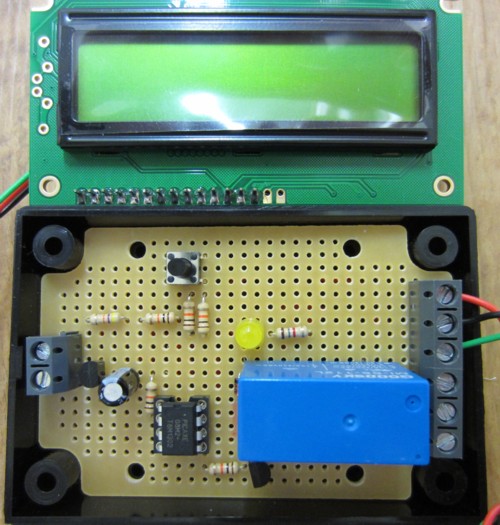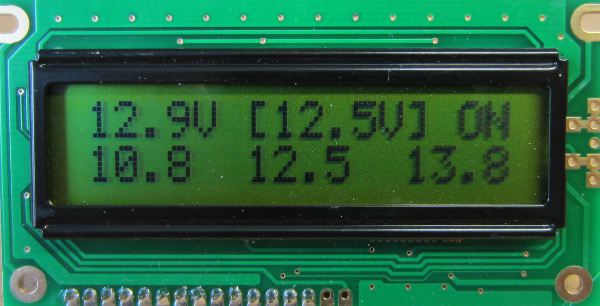We have made hundreds of low voltage disconnects designed to protect batteries from being excessively discharged, but today we made a high voltage connect circuit. The requirement was for a device which will turn on a fridge when the battery voltage exceeds 12.2V and turn it off when the voltage falls below 11.8V, but with an LCD display and datalogging of the battery voltage.
In our blog post Low Voltage Disconnect with Display and Datalogger we gave details of how we put together an LVD with display and datalogger. In this case the powered device(s) are turned off when the voltage gets too low, and only turn back on when it gets above a certain level. A high voltage connect only differs in how it responds when initially powered.
 On start up, a high voltage connect circuit will only supply power to the output device(s) if the voltage is above the user set high voltage threshold; whereas a low voltage disconnect will only supply voltage to the output device(s) if the voltage is above the user set low voltage threshold. Other than that, both devices behave identically. A high voltage connect circuit is functionally identical to a dump load circuit.
On start up, a high voltage connect circuit will only supply power to the output device(s) if the voltage is above the user set high voltage threshold; whereas a low voltage disconnect will only supply voltage to the output device(s) if the voltage is above the user set low voltage threshold. Other than that, both devices behave identically. A high voltage connect circuit is functionally identical to a dump load circuit.
With this high voltage connect we incorporated an LCD display and datalogger. The datalogger stores the last 200 battery voltage readings – one every seven and a bit minutes so that the previous 24 hours of battery voltage are logged. The display shows the current battery voltage and state of the system together with the minimum, maximum, and average voltage measured over the previous 24 hours.
We will soon be adding programmable low voltage disconnect / high voltage connect circuits with displays and datalogging to the REUK Shop. In the meantime, if you need something similar to this email neil@reuk.co.uk with details of your exact requirements.
